Fashion Undressed: Three Designers You Didn’t Know You Knew
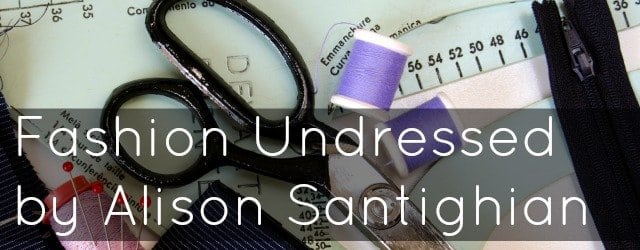
Winnie Beale had on a worker’s peaked cap, properly tilted over one eye, and the squarish, broad-shouldered suit offered by Schiaparelli that was popular for communist events. Elsa Schiaparelli had journeyed to Moscow in 1935 to observe the workers’ styles that would, it was felt, now take precedence in the fashion world.
– Alan Furst, Night Soldiers, “Paris, 1937” chapter
There’s an assumption, I think, that American designers were the first to tend towards the utilitarian, particularly during the austere times between World War I and World War II. We know the Rosie the Riveter images and the new work wear’s practicality. Those preferences, though, made it to the runway most famously in Paris, and at Elsa Schiaparelli’s normally surrealist direction. Suiting had already come up in hemlines for wartime, but Schiaparelli put down the lobster and the lips in the late 1930s. She played – I’d like to think pointedly and with an entrepreneur's sense of what would sell – on the garishly rich’s proclivity for fashionable political protest, and took the Soviet uniform to new heights. Schiaparelli’s Paris workshops reportedly produced nearly 10,000 garments annually, many in the silhouette many of us now appropriate and think of as a “safari” jacket, or even the military jackets we’ve seen on recent runways.
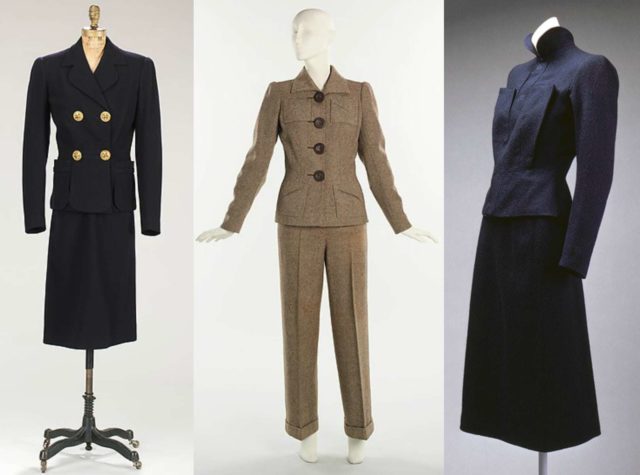
Summer 1940 (suit): Brooklyn Museum Costume Collection at The Metropolitan Museum of Art, Gift of the Brooklyn Museum, 2009; Gift of Millicent Huttleston Rogers, 1951 (image); Suit, wool, Fall 1938, credit Gift of Mrs. J.R. Keagy, 1974 (image); Pantsuit, wool and leather, Winter 1938-39, credit Brooklyn Museum Costume Collection at The Metropolitan Museum of Art, Gift of the Brooklyn Museum, 2009; Gift of Arturo and Paul Peralta-Ramos, 1955 (image)
More dark and stormy nights (and not the kind over ice, though those are delicious), and a few wars earlier, a design house known to most Brits, but to few others, laid claim to an item on every “Things You Have to Have in Your Closet” list: the trenchcoat. Granted, the interwebs debate who had the first one (Burberry also has a stake in the historical market), but Acquascutum’s case goes back to the 1850s. Unlike Schiaparelli turning the communist egalitarian ideal into a couture, and therefore elitist, symbol of social and financial prowess, the trenchcoat was an entirely practical garment. Founder John Emary turned his patented waterproof fabric into the first version of today’s trench, an overcoat for British soldiers in the first World War. Can’t you just hear the forbidden song playing in the background, as Rick and Ilsa stumble awkwardly through meeting again?
Ilsa: I wasn't sure you were the same. Let's see, the last time we met…
Rick: Was La Belle Aurore.
Ilsa: How nice, you remembered. But of course, that was the day the Germans marched into Paris.
Rick: Not an easy day to forget.
Ilsa: No.
Rick: I remember every detail. The Germans wore gray, you wore blue.
(Casablanca, quotes courtesy IMDb)
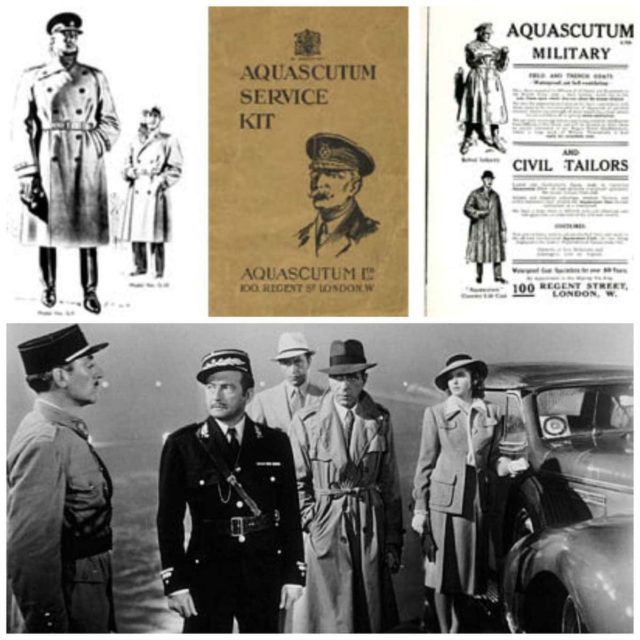
As ubiquitous as the trench and the military-inspired suit, but possibly more groundbreaking, given its place in fashion and women’s history, is Diane von Furstenberg’s wrap dress. Admittedly, the “DVF” name and brand is much more of a household name than either Schiaparelli or Aquascutum. That being said, von Furstenberg did something neither other fashion house did. A couple of things, really. First, von Furstenberg wasn’t a known designer. She wasn’t backed by a known label, nor did she have the power of a historical brand behind her first pieces. Reportedly, von Furstenberg took the training she earned as an apprentice for a textile maker, a $30,000 investment, and presented her revolutionary jersey dress to Vogue. On top of that balls-to-the-wall savvy, von Furstenberg did something else radical. She didn’t borrow a shape, a design, or even a detail from any existing walk of life. She answered the women’s movement with a decidedly feminine uniform for taking on the boardroom; the wrap dress honored and even flaunted a woman’s body, instead of hiding it or adding to it (as the next decade’s shoulder pads would do). “I dare you,” the wrap dress said. Guess what? We took the dare. 30-some years later, it’s still in heavy rotation, an easy, stylish go-to in many women’s wardrobes.
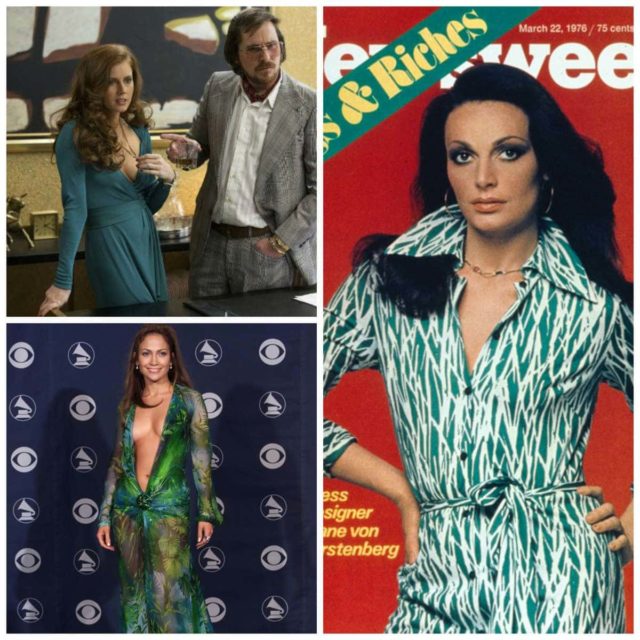
The wrap dress is so iconic that we immediately link it to the businesswoman. Even the Oscar-winning costume designers for Hollywood darling American Hustle put Amy Adams in the daringly cut one-piece. Suits-no-more, ladies. Shall we say “use ‘em if you’ve got ‘em?” J.Lo’s (in)famous Versace gown might not have happened if it weren’t for the DVF wrap dress. Von Furstenberg on Newsweek’s cover.
All three of these iconic pieces are entirely shop-able today. Granted, the designers here are higher end, but the best part about them is that they’ve been – ahem – borrowed by brands and designers at all levels, from Target to Ann Taylor. Here are three of my favorites from each of the three.
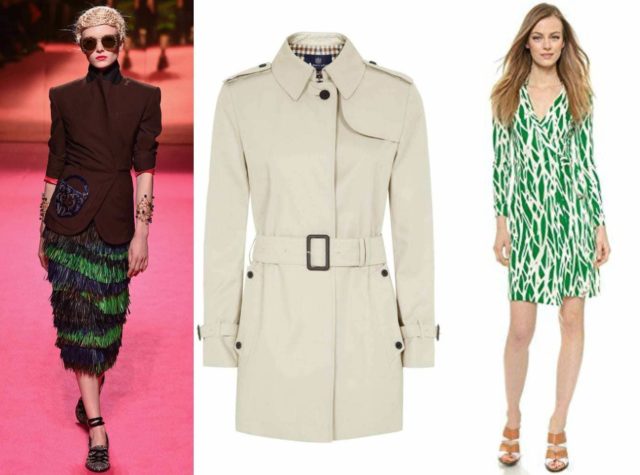
- Maison Schiaparelli, Spring 2015 Couture, Look 12: While it may remain haute couture only (and not have a ready-to-wear or licensed lines down the road), this oversized, broad-shouldered jacket pulls the workers’ aesthetic forward to 2015. Over leggings or boyfriend jeans, anyone?
- Aquascutum’s Franca Single-Breasted Raincoat: As a mama to two smaller beings, this gorgeous pale trench makes me nervous, but the shoulder detail gives a tough asymmetrical look, and the hidden buttons are sleek and modern.
- Diane von Furstenberg, you can’t go wrong with her original green twigs print
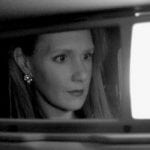
By day, Alison Santighian is a contractor for the federal government, using her super powers to serve our country, but by night (after bedtime for her “Beans” now 7 and almost 5), she pines after the “it” factor. Alison and “H” (better known as #besthusbandever) don’t believe badass has an expiration date, so they hit concerts, shows, restaurants, and openings across the globe. Alison also writes for Glass Magazine, adding a business woman's eye to fashion week reviews and style features. Follow her on Twitter.


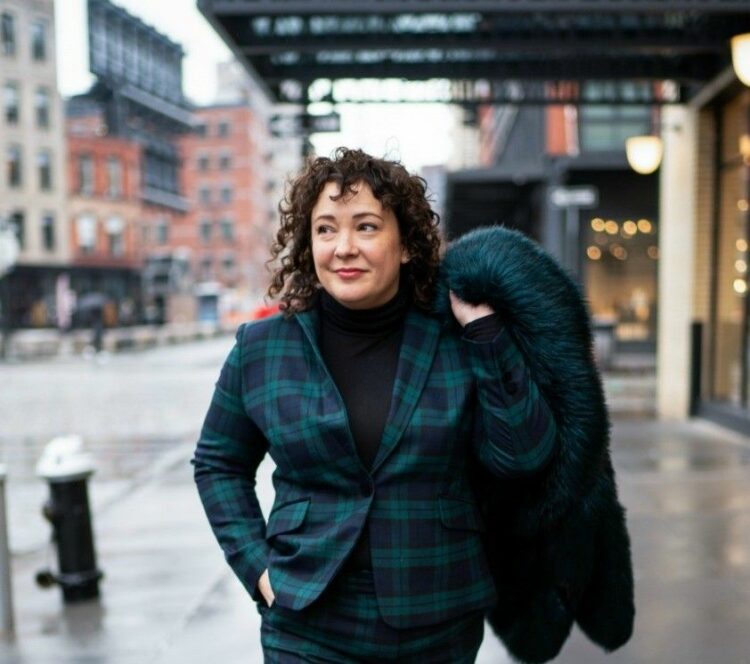
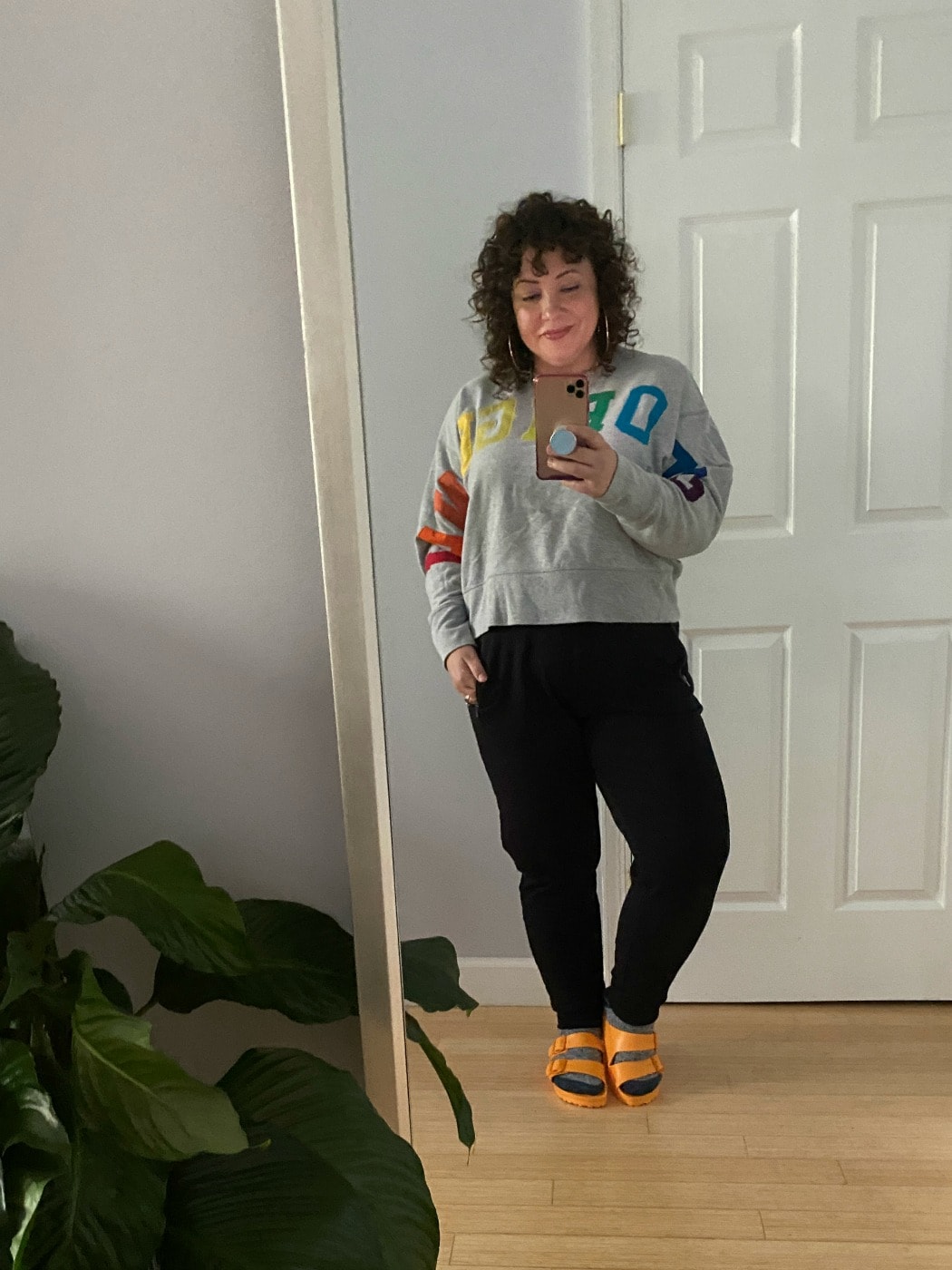
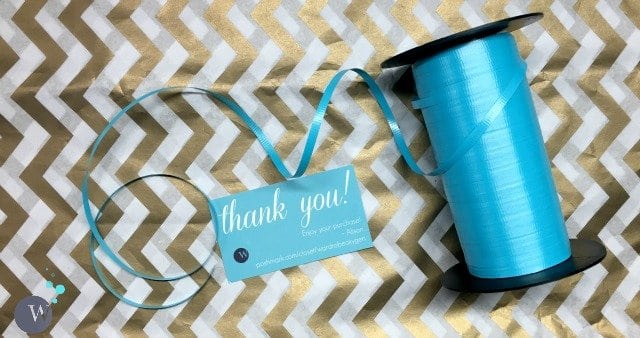
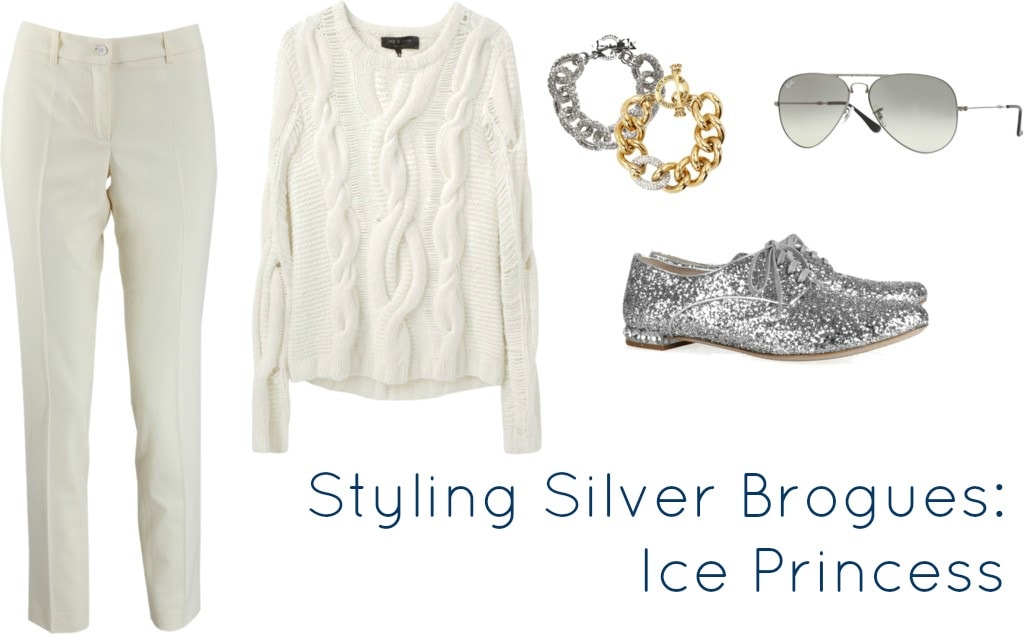
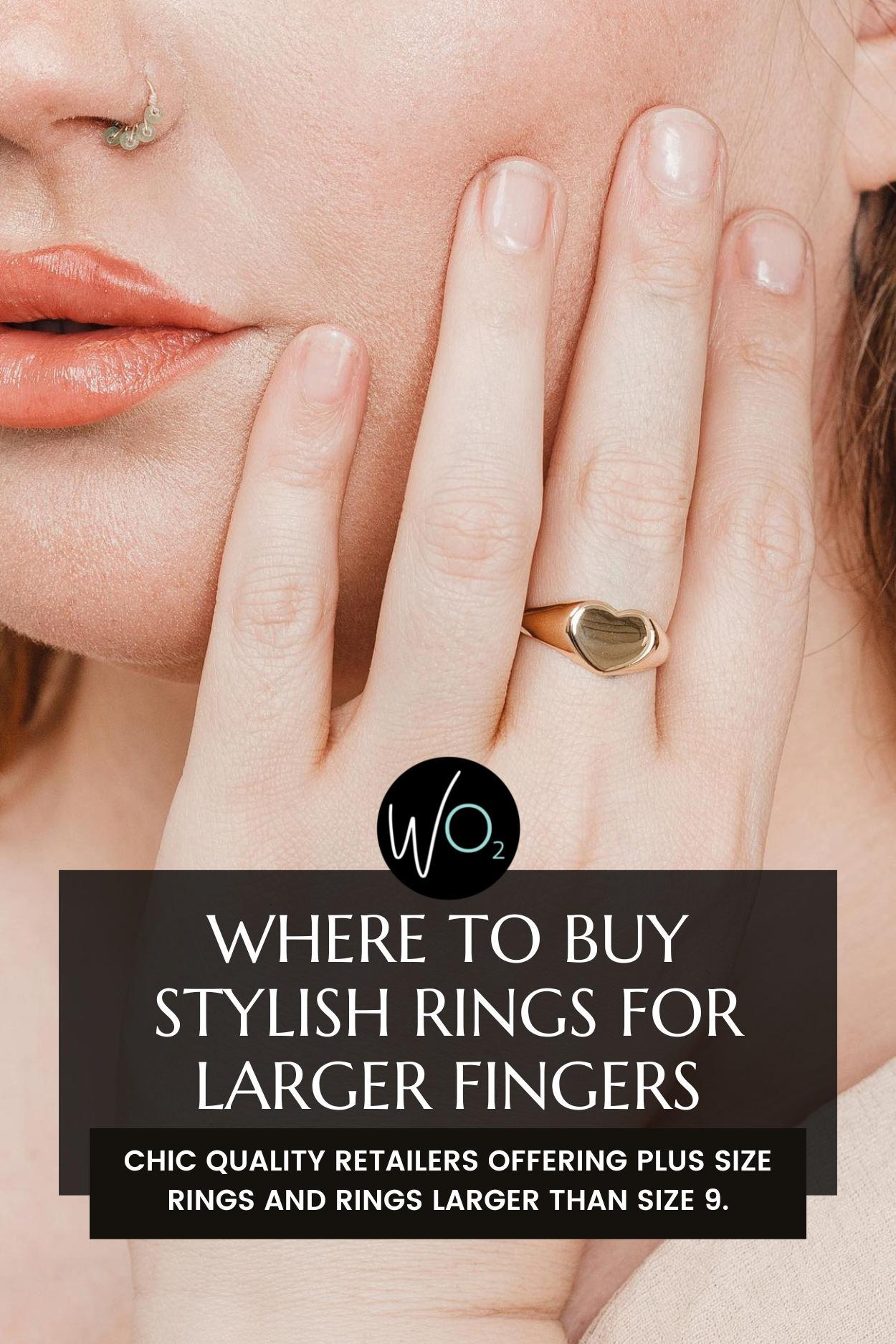
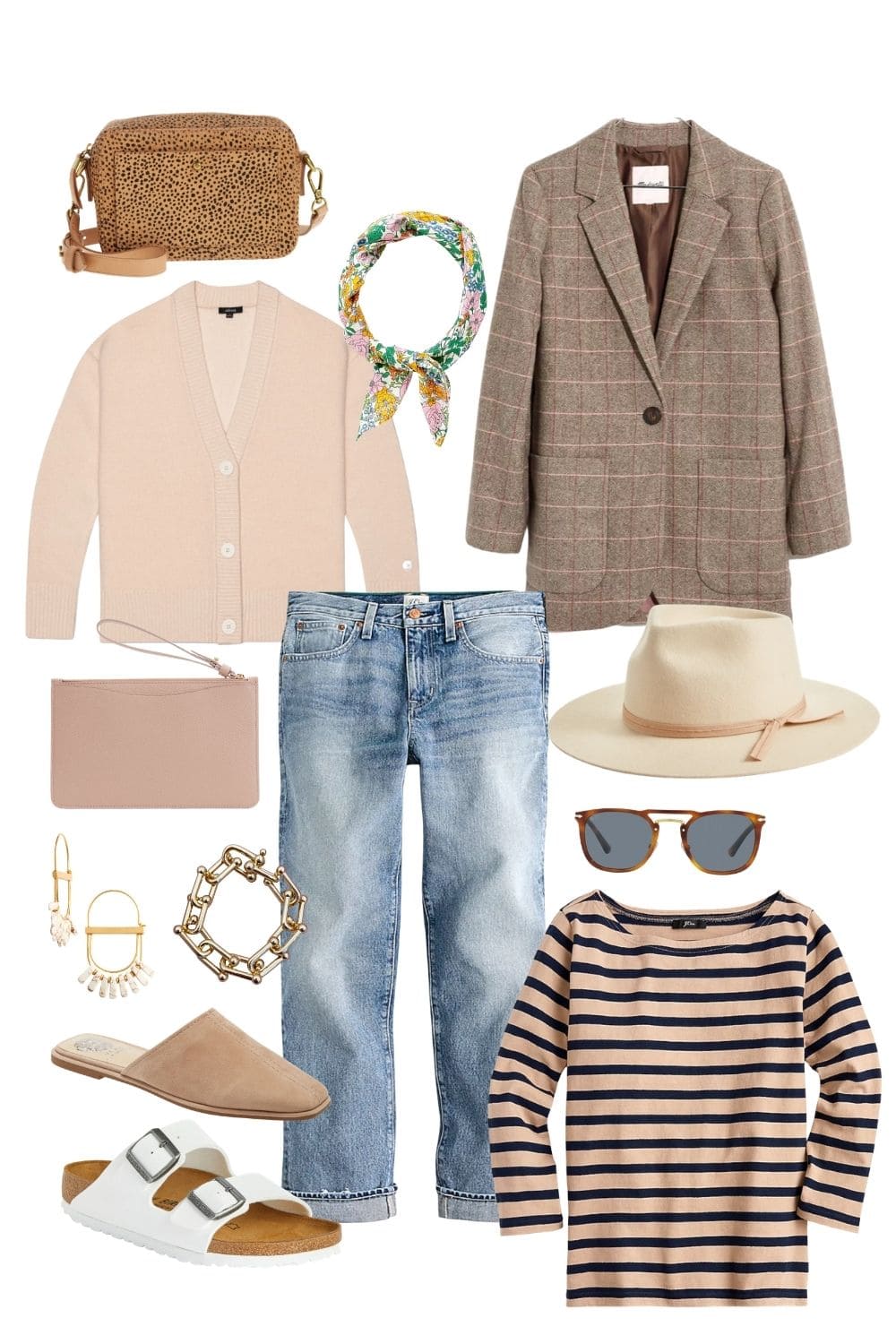
What a great article! I really enjoy seeing some fashion history here.
And I love Alan Furst. Great historical spy stories.
So glad you enjoyed it, Jennifer! Glad to find another Furst fan! I had no idea, and found it recommended in my local indie bookstore. Is there anything else in fain history that intrigues you? Would love to hear!
Ha! I read the first quote and I thought, “gosh Allison has gotten into Allan Furst.” Then I noticed it’s the other Alison writing. I’ve read a string of those spy stories, they do contain descriptions of what the people wore in those mostly drab late 30s times. I like Schiaparelli better than DVF. I’m not a fan of Amy Adams, and those scenes where she wears the wrap dress with the droopy boobs showing were not attractive to me.
Too funny, Ginger! Isn’t Furst’s writing just marvelous? Maybe we can get Allie into it 🙂
On a completely separate note, when I first learned about DVF and the wrap dress, I tried them on…and wondered how the heck I could wear them in the office, as low cut as they were. Granted, Amy Adams’ character is a caricature of sorts, but as I wrote this piece, I thought about what von Furstenberg *might* have been saying with the design. Perhaps it was something along the lines of “you men can wear your bellies hanging over your belts, how ’bout we let our boobs hang? I dare you to look while I present the corporate revenue metrics.” Crass, perhaps, but it certainly would’ve been in line with the times.